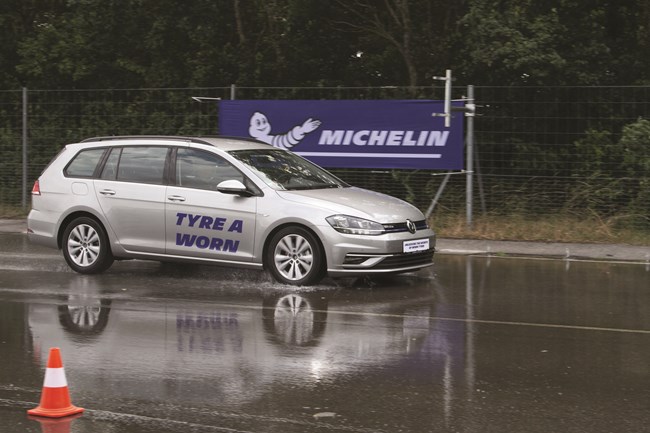
The start point for the best source of fleet information |
Worn tyre tests expected
Date: 24 July 2019 | Author: Simon Harris

Michelin has stepped up its campaign for mandatory tests of tyres at the legal tread depth limit in a bid to reduce waste, cut CO2 and lower costs for customers.
It has backed an EU resolution by France, which, if adopted, could see tyre performance rated when worn as well as when new. The new procedure could be adopted this autumn, and a working group has been set up at the United Nations Economic Commission for Europe (UNECE) to define the procedures for these tests, the reference tyres and regulatory thresholds.
Michelin says that although many tyres perform well when new, there are huge variations in performance at the 1.6mm legal minimum. It also claims that manufacturers can engineer tyres to perform well when worn but choose not to because there is no testing.
Michelin has campaigned for several years against the best practice theory of changing tyres at 3mm, suggesting it is too wasteful and quoting a study by Ernst & Young that predicted that running tyres to 1.6mm rather than 3mm would mean a reduction in tyre production of 128 million units in Europe alone, along with a CO2 saving of 6.6 million tonnes, and cost savings of more than £6 billion.
Some of that saving would be felt by fleet operators, many of whom adopt the best practice of changing tyres at 3mm. Having the confidence to run tyres until 1.6mm thanks to official testing would also allow employers to meet health and safety requirements.
Pierre Robert, vice-president of the ambition test programme at Michelin, said: "Dry grip improves by up to 10% on a worn tyre, and 70% of road accidents occur on dry roads. Fuel consumption is also better on a worn tyre, with up to a 20% improvement.
"But wet grip decreases, and currently it is difficult to predict performance. Tyre ratings when new are not necessarily a good indicator of performance at 3mm or when worn."
Michelin also claims that as vehicles are increasingly equipped with new safety technology, it becomes more important that the tyres perform well to ensure the car's features work properly.
Robert insisted that good performance when worn is a choice by the tyre manufacturer, as water dispersion ability at the legal minimum can be designed into the tread.
Tyres are currently tested and graded for fuel efficiency, wet weather performance and noise when new, giving consumers a clear indicator of performance in these areas.
Michelin says it supports the implementation of a minimum threshold for wet braking when worn to ensure consumers a minimum performance for all tyres on the market, which could see some manufacturers withdrawing tyres from the market if they fail the test.
Michelin also believes rolling resistance and noise should continue to be tested when new, as these improve with wear, although it does not want to change the labelling structure from the new tests.
Testing worn tyres
Michelin provided two circuit tests - one for handling and one for braking - to compare the performance of worn Michelin tyres with identical cars fitted with worn tyres from another premium brand.
For the braking test, we were asked to apply maximum braking force on a very wet road surface from 50mph to measure the stopping distance (calculated by GPS), while for the handling test we drove on a short lap with a mixture of wet and dry corners, gaining an impression of how the two sets of worn tyres performed.
Our braking test, taken twice on the same tyres - first for the Michelin, then for the other brand - showed a difference of more than 15m between the two, the other brand taking almost four car lengths more to stop.
The handling test showed the electronic stability control activating sooner and for longer in the rival brand tyre compared with the Michelin.
It is possible that other brands' tyres perform better than Michelin when worn, but until mandatory tyre tests come into force, we won't know before we make the choice. Michelin appears confident enough to face the challenge.










